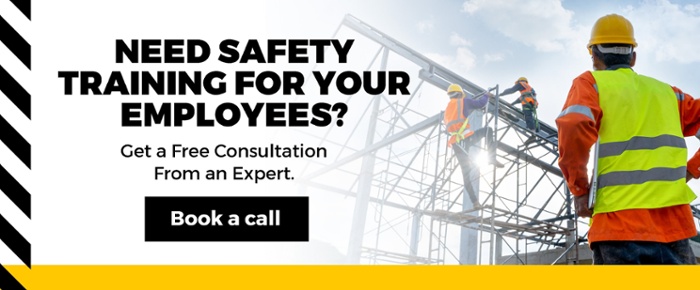Falls cause many work-related injuries and even deaths. In response, the Occupational Safety and Health Administration (OSHA) has established rules to better protect workers against falling risks.
These rules constitute the OSHA fall protection program, which highlights the importance of using a safety harness. To make sure we understand the role of a safety harness in ensuring employee safety, let’s investigate the basic concept of a safety harness and its core function.
OSHA Classification of Safety Harnesses
Fall safety is a top concern in today's construction industry, but before OSHA's founding in 1970, businesses were not responsible for providing safe working conditions.
Employees of the 1920s wore body belts at their discretion. However, this earlier personal protection equipment was not very effective. If an employee fell "incorrectly" (not horizontally), the body belt could slip over their shoulders and offer no protection.
Things improved in the 1940s when harness safety was introduced, providing better fall prevention than body belts. Still, the full-body harness did not become the standard fall prevention equipment until the 1990s, and it is now considered an essential part of workplace safety.
Safety Harness Function
A safety harness includes a body harness, connectors, and an anchorage (D-ring). The purpose of each component is as follows:
- The body harness is the piece worn by the worker, consisting of straps snugly wrapped around the torso and legs.
- Connectors are secure attachment points for a lifeline, lanyard, or deceleration device.
- A sliding-back D-ring harness should have the D-ring situated between the shoulder blades. This enables the person to remain upright following a fall.
Overall, the body harness is designed to absorb the force of a fall by distributing the impact evenly across the chest, shoulders, waist, buttocks, and legs.
Safety harnesses are meant to be used with safety lanyards. As an added measure of security, many companies and construction sites demand that the safety harness be equipped with a dual lanyard, a feature known as "100% tie-off."
One must always include lanyard length in fall distance calculations. An employee's safety relies heavily on calculating the fall distance and selecting the right lanyard length. To determine the fall distance, you must know the length of your lanyard, its shock absorber's maximum length, and the work surface's height.
OSHA Fall Protection Requirements
Falls on construction sites cause 100,000 injuries and 150 to 200 deaths annually. To mitigate this stark statistic, employers must strategically lay out workplaces to prevent employees from falling off elevated workstations or stepping into holes in the floor. This involves providing a safety harness to employees and teaching them how to use it.
OSHA mandates the use of a safety harness for construction:
- Any time an employee is six feet or more above the ground and not covered by a safety net or guardrail
- When erecting or dismantling scaffolding that has an incomplete handrail system or is higher than ten feet above the ground
- When using aerial equipment that elevates the employee higher than six feet above the ground
- Any time an employee is less than six feet away from the edge of a floor or roof opening
For scaffolding and steelworkers, the rules differ; employees on scaffolds ten feet or above must have fall protection and steelworkers must have 15 feet or above. There is also no minimum height when the employee is working alongside risky equipment, machinery, or any hazard into which they could fall.
OSHA ensures that employers protect their employees to the greatest extent possible. Therefore, additional equipment like guardrails, safety nets, and scaffolding may be required. However, it is also possible for businesses to tighten OSHA's requirements to double down on employee safety.
Related Article:
Common Construction Accidents and How to Prevent Them
Employer Duty Regarding Fall Protection
Employers must inspect the work site for surfaces that constitute a fall hazard. If a fall hazard exists, the employer must choose a fall arrest system to safeguard the worker. The safety harness is included in this category.
Employers are responsible for providing fall protection and training for each employee. In addition, OSHA mandates that a competent person evaluate a harness that has been shock-tested or used in a fall.
Final Thoughts
Safety harnesses are required by law because construction workers are continuously exposed to fall hazards and the risk of death. To meet OSHA standards, employers must provide safe workplaces, keep floors clean and dry, provide free personal protection equipment like safety harnesses, and train employees about workplace hazards.
On a construction site, people's lives are at risk, so it is critical to comply with OSHA fall protection requirements. For more information, get your free inspection preparation checklist today.


















